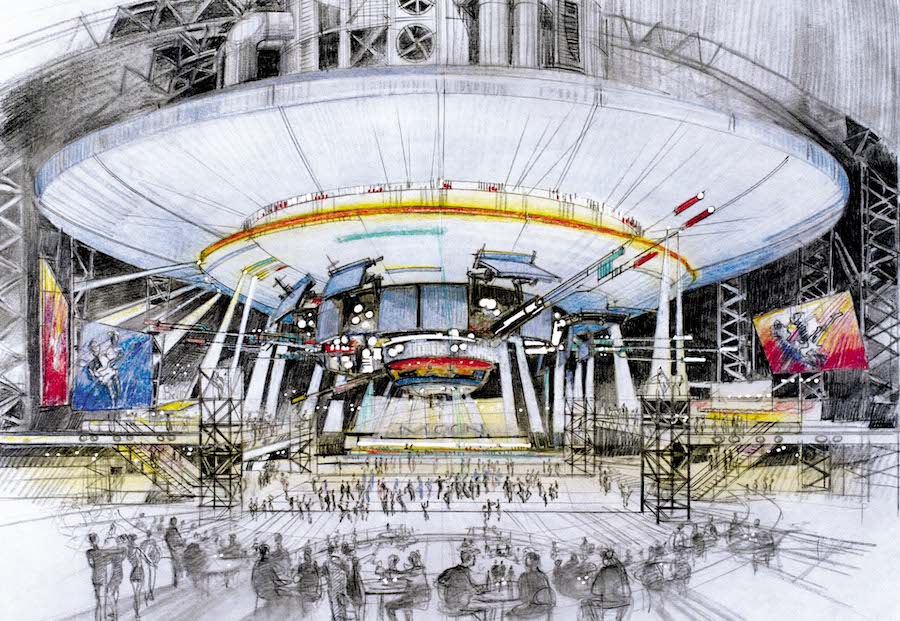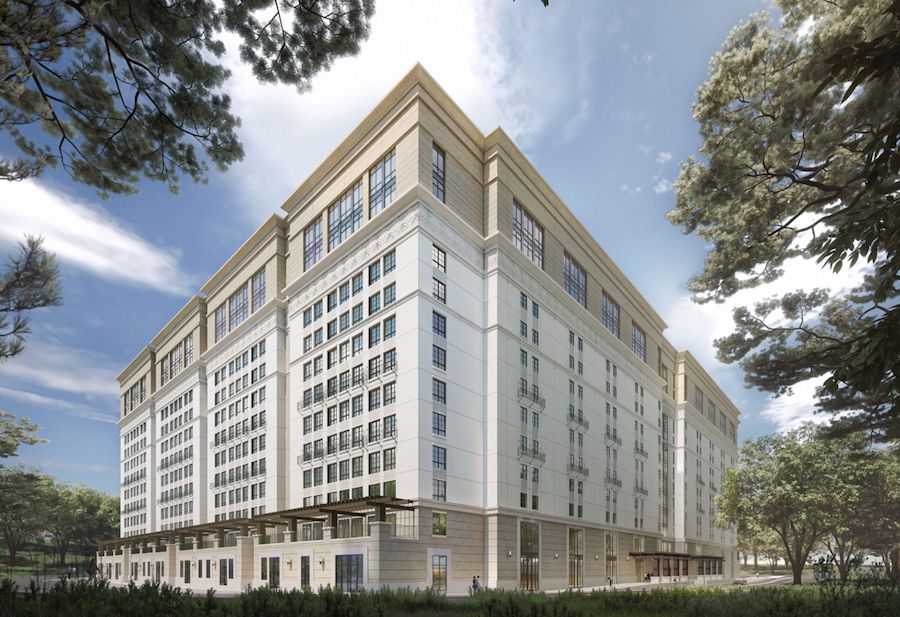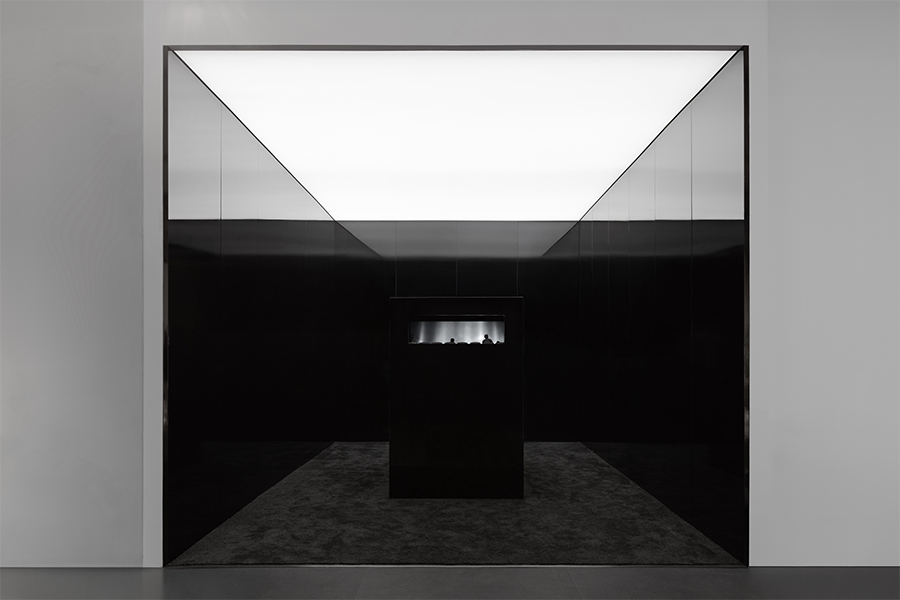Therme Group brings its wellness resort concept to North America, a moon hotel is set to land in Las Vegas in 2026, a mega-dorm concept at UC Santa Barbara sparks uproar online. All that and more in this week’s Five on Friday.
Visitors can soon visit the moon, in Las Vegas

The spaceship nightclub at Moon World Resorts Las Vegas; rendering courtesy of Moon World Resorts
While most of us aren’t rich enough to fly to space, the next best thing may be a new moon-shaped hotel headed to the Las Vegas Strip in 2026. Canadian company Moon World Resorts announced plans for the $5 billion, 4,000-room hotel fashioned as a replica of the moon and clocking in at 735 feet tall and 650 feet wide, writes Travel + Leisure. Like most Vegas resorts, it will feature a spa, a slew of F+B offerings, retail, and clubs and lounges, including a nightclub that will be positioned directly under a spaceship that will beam light down on guests. Perhaps the highlight is the active lunar colony on the top half of the resort. For $500, visitors can spend 90 minutes exploring the 10-acre space, using a moon buggy to pass over craters.
Lehrer Architects builds colorful transitional homes in LA

Whitsett Tiny Homes Village in Los Angeles; photo courtesy of Lehrer Architects
Lehrer Architects and the City of Los Angeles Bureau of Engineering have teamed up once again to transform unused plots of land into design-forward communities for Angelenos transitioning out of homelessness. In just seven months, Lehrer Architects and the City of Los Angeles have developed four experimental neighborhoods featuring small, boldly hued modular houses. The September debut of the newest community, dubbed the Whitsett Tiny Homes Village brings into existence 500 beds for those needing shelter the most, reports the Architect’s Newspaper. The village also features two large, central outdoor spaces where community members can gather for meals and to socialize.
Dormzilla comes to UC Santa Barbara

A rendering of Munger Hall; courtesy of UCSB Office of Strategic Asset Management
Plans for a new dorm at the University of California, Santa Barbara (UCSB) has sparked uproar across the internet, according to Bloomberg. The 11-story building called Munger Hall—funded by billionaire investor Charlie Munger who fancies himself an architecture enthusiast and whose donation came with the caveat that his design must be followed—will house 5,000 students in a 1.69 million-square-foot building, making it the largest college dorm in the world. Students will get small bedrooms, with eight units sharing a kitchen and bathroom. Instead of windows, interior rooms would be lit by porthole-like fixtures. The mega-dorm is in response to the crisis the university is facing that leaves one in 20 UC students unhoused. Consulting architect Dennis McFadden resigned from the university’s design review committee calling the building “a misguided experiment that will affect the health and safety of multiple generations of undergraduates who will be forced to negotiate the design’s gross miscalculations and unintended consequences.”
Therme brings wellness theme park to North America

Concept image for Therme Canada; courtesy of Therme Group/DesignWell
Therme Group, the European wellness resort brand, is expanding its presence in North America by bringing its large-scale wellness centers to select major cities throughout the U.S., writes DesignWell. Earlier this year, the company announced it will debut Therme Canada | Ontario Place, which will welcome more than 20,000 visitors a day. In another positive development for the mega-wellness brand, Robert Hammond was recently named as president and chief strategy officer (he begins the role in April 2022). Hammond previously served as cofounder and executive director of the High Line, the urban transformation project that reinvented an abandoned rail line in Manhattan into a public park, and he was also involved in New York’s Times Square Alliance, Metropolitan Museum of Art, and Little Island development.
Can restaurants be more comfortable to work in?

Since the pandemic began, the food service industry has faced staffing shortages as many workers rethink the difficult conditions that come with restaurant work: low pay, physically taxing labor, abusive customers, and more. There have been more calls to improve worker pay and provide benefits like health insurance, childcare, and sick leave. What’s more, operators are implementing new technologies, upgrading their spaces, and redesigning how restaurant work happens to make the experience better, writes Jaya Saxena at Eater. Whether it’s adding air conditioners to the kitchen like at Kindred and Hello, Sailor in North Carolina, or making spaces accessible to all like at Harlem restaurant Contento, which includes enough space to navigate between tables as well as a low bar so wheelchair users can pull right up, there are also changes to reimagining the long hours associated with restaurant work. “The biggest change of all might just be the culture,” writes Saxena.
More from HD:
Rosewood San Francisco Slated for 2026 Opening
What I’ve Learned Podcast: Kona Gray, EDSA
Monastero Arx Vivendi Maintains Its Old-World Charm



